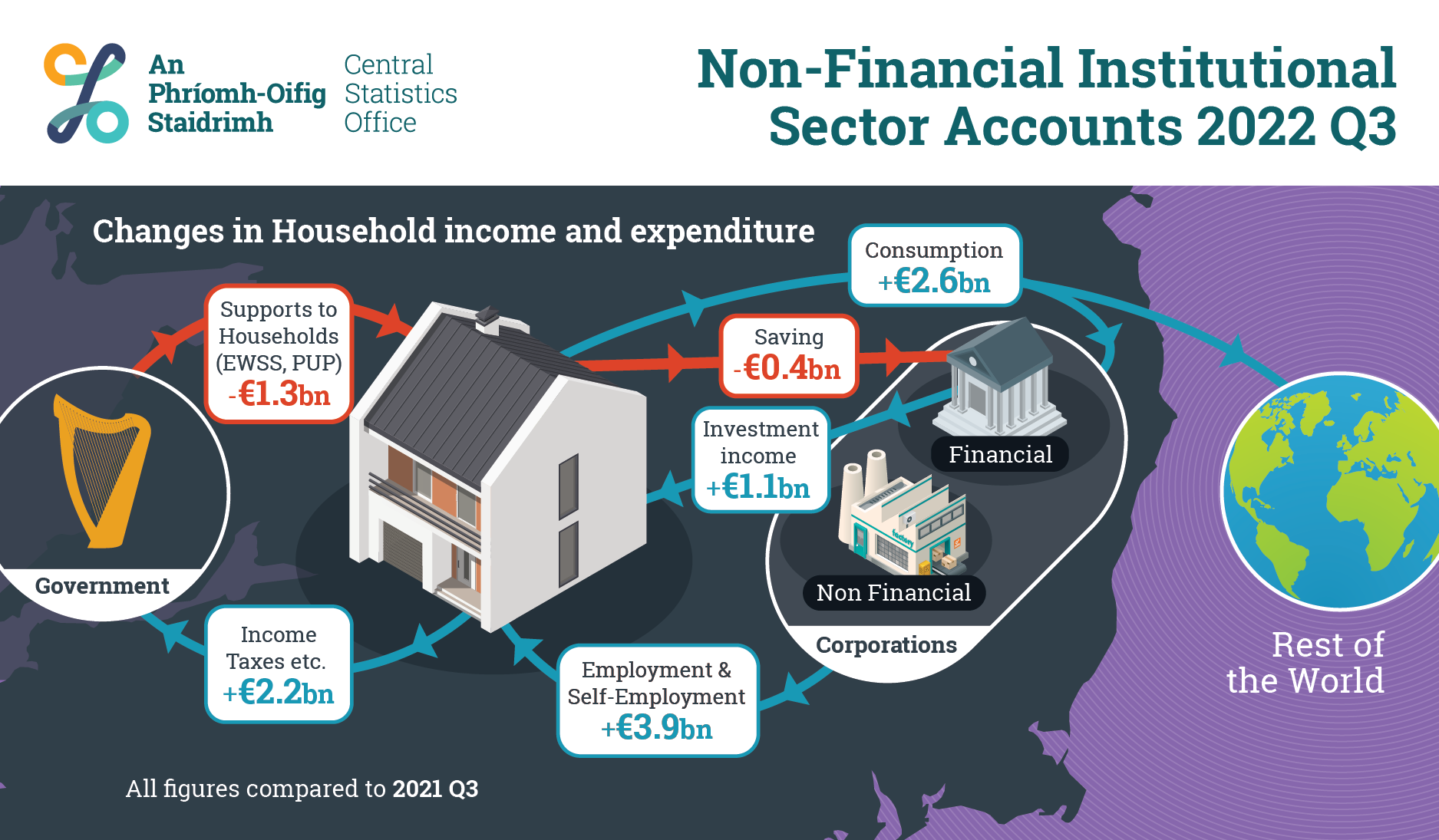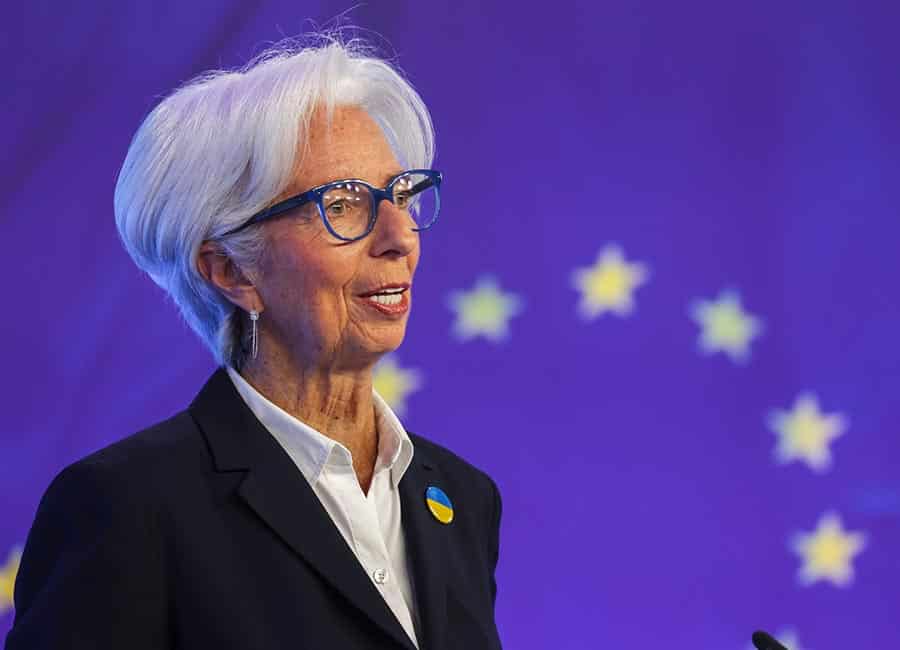The standard of living, as measured as real total disposable income, declined in the third quarter of 2022 from the record high measured a year earlier.
Figures from the Central Statistics Office (CSO) shows disposable income declined in three of the four quarters prior to the end of Q3.
Growth in household earnings as a result of more people entering the workforce was outpaced by inflation, resulting in lower real incomes. Household consumption also grew, both in terms of higher inflation and more goods and services being used.
Household savings remained elevated compared to pre-pandemic levels when around 10% of disposable income was saved, with households savings around 19.5% of their disposable income in Q3, compared to 20.1% in Q2.
Overall, total disposable income was measured at €35.8bn in Q3, up from €35.2bn in Q2, while final consumption expenditure was €28.8bn, also up from €28.1bn in Q2.
"With higher inflation in recent quarters, real disposable income has been declining. This has been a slow reduction in living standards, as wages continued to rise but did not keep pace with prices," said Peter Culhane, statistician in the national accounts analysis and globalisation division of the CSO.
"Household spending continued to grow in part due to inflation but also due to households consuming more goods and services. The saving rate declined in July, August, and September 2022 but was still well above its long-term average of around 10% pre-pandemic.
"The economy more widely grew in the quarter. This expansion was dominated by foreign multinationals here, but domestically-owned corporations also saw some increase in value added.
"This improved situation fed into the government's net lending, as taxation income grew, and expenditure declined due to fewer pandemic supports being in place."
The CSO proffered that households have generally decided against winding down their lockdown savings, instead opting to add to their wealth, and despite the decline in disposable income, seasonally adjusted compensation for employees rose in seven of 10 monitored sectors.

Overall pay increased fastest quarter-on-quarter in public administration, education and health (+€149m), ahead of distribution, transport, hotels and restaurants (+€75m) and professional, administration and support services (+€52m).
Declines were measured in industry (excluding construction) (-€35m), the arts, entertainment and other services, and real estate activities (both -€1m).
Investment in non-financial assets, such as dwellings, went from €1.7bn in Q3 2021 to €2.7bn in Q3 2022. Households also paid off €200m in loans rather than take out new ones, and added €2.4bn to their €145bn deposits in banks.
The gross value added of non-financial corporations, which drives Ireland's GDP, was €18bn or 21% higher in Q3 than in the corresponding quarter of 2021, as corporations continued to bring valuable intellectual property (IP) assets onshore in Ireland.
Such assets are used in global production chains, and the profit derived from which will flow through Ireland. Large IP imports made Ireland a net borrower from the rest of the world during Q3, although it is expected they will create more net lending in the longer term.
Elsewhere, the government surplus was €2.4bn in Q3, compared to a net deficit of €2.4bn a year earlier, due to increased revenues and lower expenditure coming out of the pandemic.
Taxes on income and wealth rose from €9.2bn to €12.7bn year-on-year, as households paid an additional €800m in income tax and companies paid €2.7bn more in corporation tax.
Subsidies fell from €1.8bn to €500m as the Employment Wage Subsidy Scheme was phased out, while social transfers declined only marginally as new payments were introduced to fight cost of living increases in place of the Pandemic Unemployment Payment.
Overall, the economy grew in Q3, with GDP up €19bn or 17% to €134bn. After outflows to foreign investors, gross national income was €96bn, up €7bn (8%) year-on-year.
(Pic: Getty Images)











